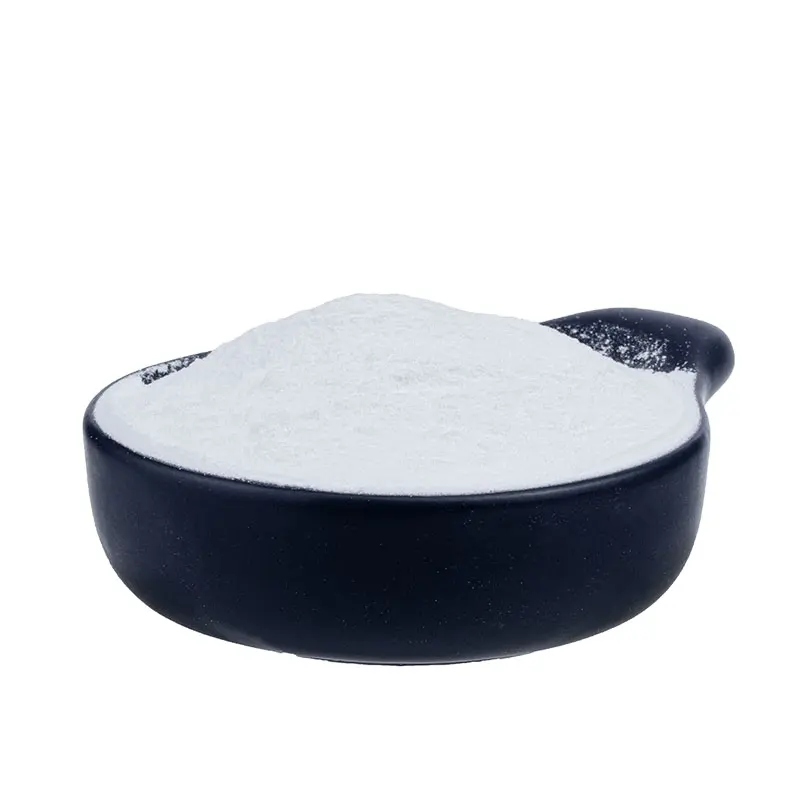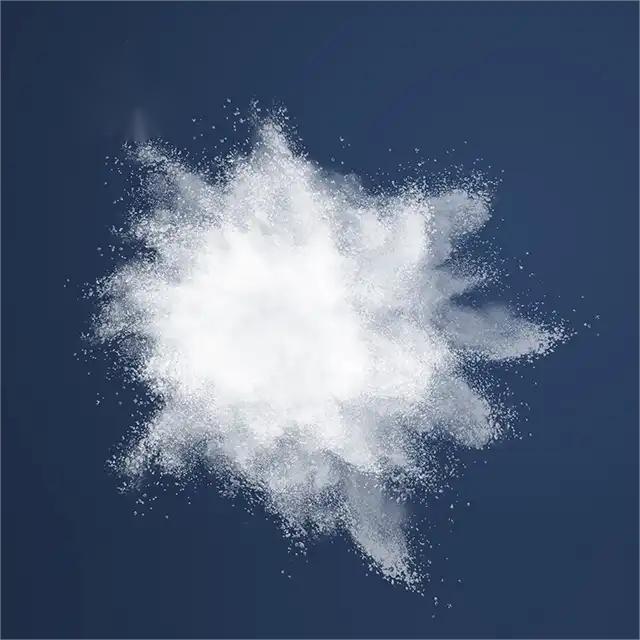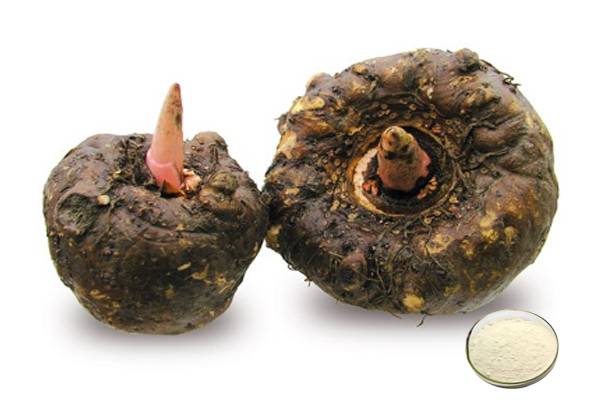食品グレードのヒアルロン酸ナトリウム粉末バルク
製品名:食品グレードのヒアルロン酸ナトリウム粉末 バルク
化学検査:95%≥
分子量:0.80-1.50MDa
外観:白またはほとんど白い粉末
残留農薬:(ec) no 396/2005規格に準拠
- 記述
- データシート
- 証明書
-
食品グレードのヒアルロン酸ナトリウム粉末とは何ですか?
hyaluronateナトリウム is a glycosaminoglycan that is a major component of the extracellular matrix。 This component can naturally participate in tissue repair and displays unique viscoelasticity, biodegradability, and biocompatibility, making it an ideal material for tissue engineering. Natural sodium hyaluronate has a low turnover rate and limited mechanical properties due to its susceptibility to degradation by hyaluronidase. Therefore, cross-linking of natural sodium hyaluronate using different linkers is required to make it better for the mission of tissue engineering. Sodium hyaluronate is easily hydrolyzed to hyaluronic acid in the water, and both have similar functions. However, Sodium Hyaluronate has a smaller molecular weight and can be absorbed by the deeper tissues of the body. Meanwhile, sodium hyaluronate has the functions of immunity and anti-inflammation, lubrication of joints, beauty, and skincare.
食品グレードのヒアルロン酸ナトリウム食品添加物の栄養ベースとしてのヒアルロン酸ナトリウムの添加を指します。ヒアルロン酸ナトリウムを含む食品は、体内の水分補給、骨と関節機能の改善、胃粘膜の保護など、多くの効果を発揮します。食品グレードの用途におけるヒアルロン酸ナトリウムの純度要求は、医薬品グレードほど高くはありませんが、微生物学的要求は少し高くなっています。
グリーンスプリング技術は、食品グレードのヒアルロン酸ナトリウム粉末バルクを供給し、顧客に応じて分子量をカスタマイズすることができます'。吸収率が高く、皮膚の角層の隙間を直接貫通し、免疫システムを活性化し、創傷治癒を促進し、コラーゲンの安定性を高め、アンチエイジングと抗酸化作用を発揮します。グリーン春の技術は、製品の品質を厳格に管理し、この食品グレードのヒアルロン酸ナトリウム粉末は、eu基準、米国薬局方、日本薬局方およびその他の国際基準で、低農薬残留物、溶剤残留物、および重金属含有量を有しています。専門的なサードパーティのテストレポートが利用可能です。
规格:
商品名
食品グレードのヒアルロン酸ナトリウム粉末 バルク
化学検査
95%≥
分子量
0.80-1.50MDa
年生
食品
外観
白またはほとんど白い粉末
残留農薬
(ec) no 396/2005規格に準拠しています
規制:
euの規制に準拠しています。
Learn More About Our Comprehensive Solution for Compliant and Stable Hyaluronic Acid Ingredient.
見積もりをお探しですか?Benefits:
Promotes Healing and Repair of the Body
The unique structure of sodium hyaluronate as a temporary structure helps nutrient diffusion and waste removal from the site of injury. And hyaluronic acid interacts with keratin-forming cells. Keratinocytes are the mainstay of the skin's epidermis and serve to produce keratin, and sodium hyaluronate directly affects the proliferation and migration of these cells. Several important functions associated with hyaluronic acid during wound healing are derived primarily from the CD44 receptor.CD44 is an important receptor for sodium hyaluronate and is present on the cell membranes of almost all cells. CD44 is responsible for the internalization of HA degradation products during wound production and is an important receptor during the inflammatory response. In addition, fibroblasts have a role in promoting cellular repair, and CD44 promotes the transfer of fibroblasts from the vicinity of the wound area to the wound area, thereby accelerating wound healing.
There are also interactions between CD44 and cell surface RHAMM receptors, which interact with CD44 to regulate signal transduction, cell motility, and wound healing. Related studies have shown that RHAMM has a key role in the translocation of CD44 to the cell surface, which facilitates the triggering of pathways activated by sodium hyaluronate and CD44 receptors.WEIGEL et al. presented a model that demonstrated a specific interaction between coagulation proteins and hyaluronic acid, with low molecular weight sodium hyaluronate reducing tissue damage by oxygen free radicals during the wound healing process. Elevated levels of hyaluronic acid lead to the release of growth factors, among others, and influence cell-cell interactions through the formation of pericellular membranes, leading to faster cell proliferation and easier wound recovery.
Anti-inflammatory
When the body is injured, leukocytes migrate to the site of injury using receptors on the vessel wall and secrete proteases for tissue degradation. When blood levels of hyaluronic acid and its sodium salt are high, it slows the movement of leukocytes by binding and interacting with their CD44 receptor. When the receptor is blocked, only fewer leukocytes can migrate to the site of inflammation. However, it does not completely block the leukocyte migration process, it only slows it down. Sufficient numbers of leukocytes will still migrate to the wound site to provide healing, but the inflammatory response will be reduced.
Improves Skin Moisture
Sodium hyaluronate is widely found in human skin tissue. Its molecular structure contains many hydrogen bonds and is spatially rigid in the form of a helical column with a large number of hydroxyl groups on the inside. It can bind a large number of water molecules and these water molecules are very strong within the column. It has good water absorption and safety. The reason for the gradual decrease in the water content of the skin is that with age, the activity of fibroblasts decreases drastically, and their secretion of hyaluronic acid also decreases dramatically. Externally ingested sodium hyaluronate can be broken down by bacteria in the cecum into oligosaccharides, which are absorbed through the colon into the blood or lymph into the skin throughout the body. Increasing the activity of fibroblasts leads to the secretion of hyaluronic acid by fibroblasts in the dermis, thus keeping the water content in the skin relatively stable.
A Japanese researcher did 1 experiment with 22 people with dry skin symptoms. Hyaluronic acid tablets were taken once a day and after 6 weeks compared to the control group. The experimental group showed significant improvement in dry skin symptoms and tested an increase in skin moisture content compared to before. Feng Ning et al. organized 52 healthy volunteers of different ages to carry out experiments, and the results of the experiments showed that the difference in skin moisture content detected before and after the trial consumption of hyaluronic acid in the trial group was significantly greater than that in the control group. It indicates that oral consumption of hyaluronic acid can effectively improve the symptoms of skin dehydration.
Applications:
In Cosmetics:
Sodium hyaluronate has excellent skin permeability and cell penetration, so it can reduce the skin's elasticity increase, moisture increase, and wrinkle reduction, with significant anti-wrinkle, anti-aging, and other functions, such as clinically used in hydrafacial injection. In addition, small molecule sodium hyaluronate powder is often used externally as cosmetics to hydrate, anti-wrinkle, and anti-aging, as well as to improve skin texture or skin luster and other effects.
In the Food Field:
On 28 December 2020, China's National Health Commission approved sodium hyaluronate as a new food ingredient. Sodium hyaluronate powder has been used in a variety of products including milk and dairy products, beverages, alcohol, cocoa products, chocolate and chocolate products (including cocoa butter substitute chocolate and products) confectionery, and frozen beverages.
-
ダウンロード
食品グレードのヒアルロン酸ナトリウム粉末coa


 英語
英語 フランス
フランス スペイン
スペイン ロシア
ロシア 韓国
韓国 日本
日本












